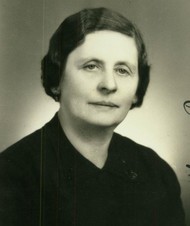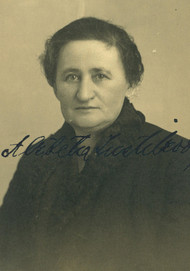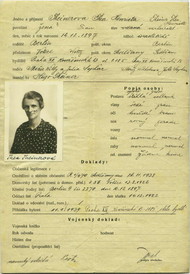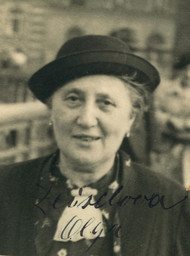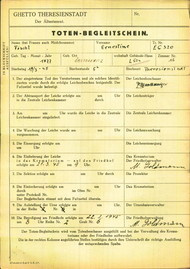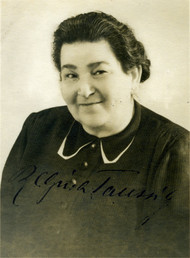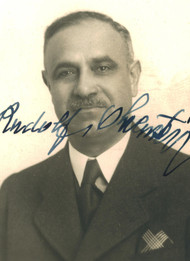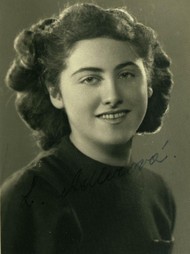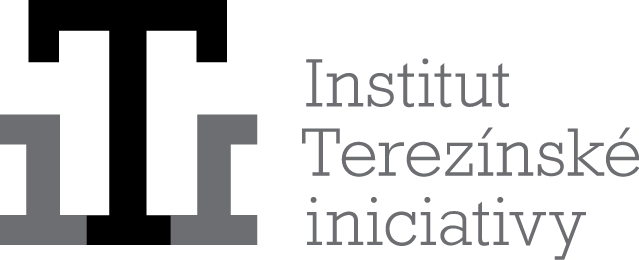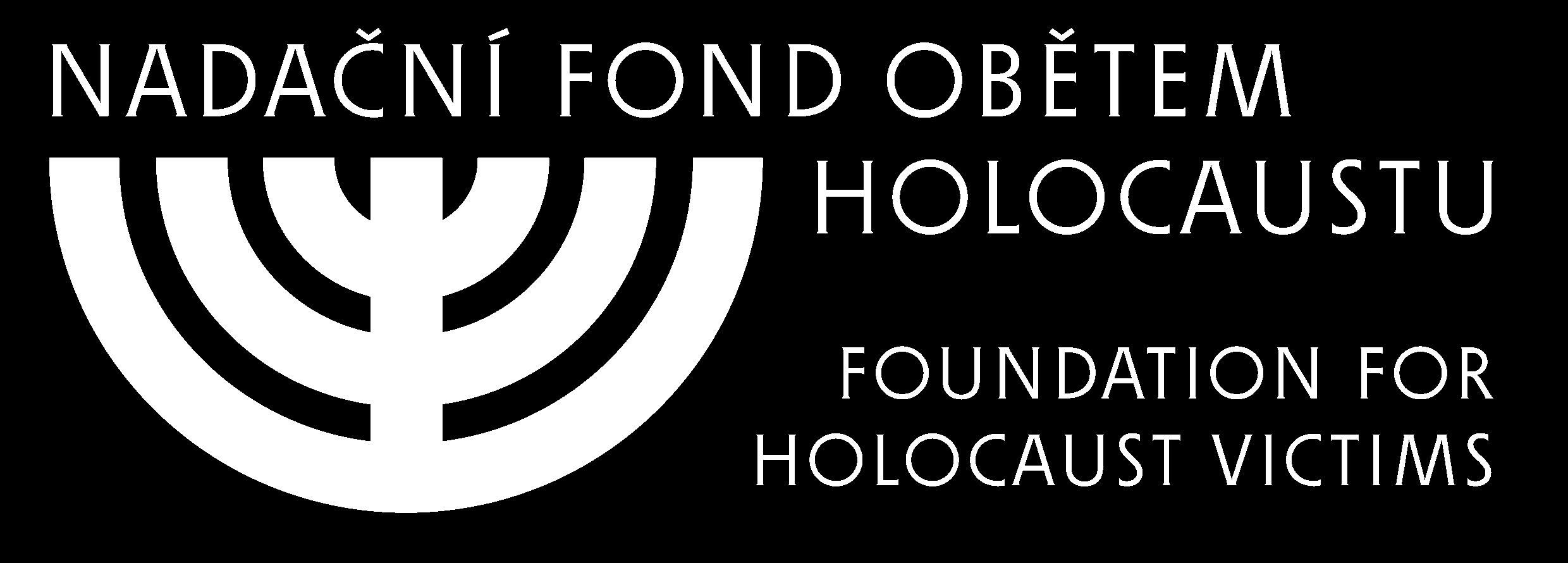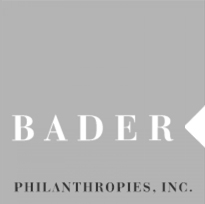The Putting Faces to Numbers module is based on the unique linking of online resources published on the educational portal holocaust.cz. Using the database of holocaust victims, including photographs and other digitalised archive documents, historians' writings, personal memoirs and further pictorial materials, pupils can explore the history of the Holocaust and the Second World War in an interactive way, with the use of modern technology, and discuss the key issues of modern society.
The database of Holocaust victims, available on the holocaust.cz website, contains over 130,000 records of people who were persecuted and murdered during the Second World War as a result of their Jewish origin, and who came from the Czech lands or passed through the Terezín ghetto. The brief records of men, women and children are connected with the contents of the holocaust.cz portal and, through the Terezín Album project, are complemented by authentic documents and photographs. The information sources on offer allow the fates of individual people or groups of people to be reconstructed.
This research in the module Putting Faces to Numbers should not, however, be the actual goal of the whole process, but rather a means by which to teach the history of the Holocaust, and through this to educate people to reject displays of antisemitism, xenophobia and racism, and to be able to understand how unacceptable they are from the point of view of human rights. This aim is in keeping with one of the desired outcomes of the teaching of modern history, as defined by the Framework Educational Programme for Elementary Schools (RVP ZV). A more detailed description of the way in which the module fits into the structure of this framework programme can be found at the end of this text.
One of the great advantages of working with the online resources on holocaust.cz is their flexibility. This means that it is entirely up to teachers themselves to decide how exactly to use the Putting Faces to Numbers module, and how many hours to devote to it. We believe that this free approach will allow the module to be included in various school education programmes, and that a precise methodological description would hamper teachers. It is ideal to try out the database in advance, and to use it in the context of specific teaching aims. For the module to have the intended educational results, however, it ought to be used in line with the following principles.
The module should be implemented in three basic stages - preparation, actual use of the database and reflection. All three stages should, through their form and content, encourage pupils to become aware of the specific ways in which racism, xenophobia and antisemitism are displayed, and why we should not leave these dangerous tendencies unnoticed.
Preparation:
Given that the key activities in the module relate to discovering the names and personalities of those who were persecuted, it is a good idea, before starting actual work on the module, to have a think about names and their significance for our identity. The very title of the module indicates that the persecution of Jews during the Second World War included an attempt to erase their individual identities. This often took the form of giving them replacement names, or impersonal numbers. In order to focus on this theme, we need to look at names in themselves, including on a totally non-historical level. Pupils can think about the origin of their names, their meaning and so on. This opens the way to later consideration of the consequences of replacing names by numbers. One activity that may be used is What does my name mean?
:
-
Pupils are each given a piece of paper (ideally A3 size). In the middle they write their name, surname and, where relevant, nickname. Then, in the form of a mind map for each name, they write down additional information (what their name means, who they are named after, what they are called at home etc.)
-
The information will then be shared, so pupils should write down only what they are willing to share with others.
-
Pupils then divide into groups (max. 5-6 people) and pupils introduce themselves in turn, in line with what they have written down. The others may ask questions.
-
In the closing phase, the pieces of paper may be put up around the classroom, or the pupils may talk together more about the interesting things they have discovered in their groups.
This activity may be complemented by a discussion of the history of Jewish names. Use can be made of, for example, Ruth Bondy's book Rodinné dědictví. Jména v Čechách a na Moravě (Family Heritage: Names in Bohemia and Moravia) (Praha 2006)
Using the database:
There are several ways in which pupils may start to use the database. They may search by name and surname, start from the various documents, from birth date etc.
The form of searches and the way in which they are processed can also be varied. The approach chosen should aim to help the pupils understand the role of law at a time of lawlessness, but whether the work that emerges takes the form of a presentation, a story, theatre scenes, an image, poem or anything else is up to teachers. It is also up to teachers to decide whether to use group work, to let individuals come up with their own work, to have the results presented together, or to use them in an event involving the whole school.
The flexibility of the educational model, the interactive and heterogeneous way in which the database of victims may be used, and the ability to set various kinds of tasks makes it suitable for use in inclusive education. Pupils with various talents and various abilities may use the database - some will show considerable flair for searching in context, while others will be able to connect information on the lives of several people in a logical way. Others may understand the German terms used.
Although we want users to approach the database with the smallest number of recommendations and limitations, we would like to draw your attention to three important aspects that it is important to take into account:
-
1. The documents relating to individuals are, for the most part, authentic materials from the Prague police archive (currently stored in the National Archive in Prague). They have not been altered or corrected in any way. Pupils will have a unique opportunity to work with authentic historical sources and to try their hand at historians' work. This type of activity should help them to make use of heterogeneous texts as a source of inforamtion, and also to become aware of how written history is in fact created.
Authentic materials are sometimes difficult to work with, for purely practical reasons - the manuscript may be hard to read, or some expressions may be difficult to understand. We realise that we cannot anticipate all possible complications, and we have not even tried to - this is simply an aspect of working with historical documents. We offer at least partial help in the Guide to Using the Database of Victims and Digitalised Documents, where you will find explanations of some concepts and the most frequent types of documents.
-
2. Given the origin of the documents - this is a police archive - users should also be aware that the documents show only small fragments of the lives of those they concern. Much information is missing, or is not directly shown - pupils will thus have a certain amount of freedom and room to undertake a certain degree of detective work. The results of their research will not be easy to verify - there is no single correct answer, no single correct attempt at reconstruction. But this should become a positive feature of using the database.
-
3. The third important aspect is contextual support for the documents in the database. The holocaust.cz portal is a rich source of detailed information on the fates of Jews and Roma during the Second World War, and the information gained in the reconstruction of particular lives and stories can thus be set in the period context.

Example of work by a girl from an elementary school in Bohutíň
Reflections
The final stage of the Putting Faces to Numbers module needs to be given due attention and sufficient space, since it is in this phase that pupils should have the space to recapitulate the process through which they have passed, to think about the consequences of antisemitism and racism, and also to have the opportunity to take away from the whole educational process something relevant to their own lives. If you are covering the module as a long-term project, it is worth reflecting at intervals on the activities that have been carried out.
This reflection can take place in many different ways, and the approach taken depends on the habits and style of each teacher. On a general level we advise that it should be during this stage that questions should appear such as: Why did faces/names become numbers? How was it possible for people to become numbers - for a certain group of people to be treated in the way that the Jews were treated during the Second World War? Could something like this ever happen in contemporary society? Might we come across it in everyday life? Does contemporary society have effective mechanisms to prevent phenomena like this from occurring?
An important theme in the Putting Faces to Numbers module is commemorating victims of the Holocaust. By returning faces to numbers, we are also remembering someone who died as the result of racial persecution. What does returning a face to a number mean? Is this commemoration necessary? If so, then for whom - for the victim, or for us? This part of the reflection may also be connected with thoughts or activities concerning local monuments and memorials to the victims of wars and totalitarian regimes.
As part of the reflection, pupils should also have the opportunity to talk about how they found the work, what they learned during it, what they would like to add and so on.
As far as form is concerned, there are several possibilities:
-
a closing discussion, during which you will ask some of the questions mentioned above
-
pupils write an essay on the subject of Putting Faces to Numbers
-
pupils keep a working diary throughout the project, where they can record their feelings and findings etc. (This method requires slightly more time, in order for pupils to get used to this type of work. The working diary should remain a private document under all circumstances, and it should only be made public, in whole or part, with the writer's consent).
-
Finishing sentences - an activity in which you write the start of several sentences on a flip chart (such as
If we take people's names from them...
). Pupils complete the sentences without talking, and then read and comment on others' points of view. -
and many others...
The Putting Faces to Numbers module in the context of the Framework Educational Programme for Elementary Schools
In creating the module and supporting materials, we used the requirements of the Framework Educational Programme as a basis. In terms of areas of education, the module is most naturally suited to the People and Society section of the history education field. In terms of content, it falls into the Modern Period I unit, since it helps to fulfil one of the expected outcomes of that unit: that pupils should be able to explain, using examples, the concepts of antisemitism, racism and their unacceptability from the point of view of human rights.
The module will help to develop the following key competencies in particular:
Learning competencies:
Through the use of informational texts, authentic documents, pictorial material and other resources, pupils learn to search for and sort information, and by understanding, connecting and systematising it, to make effective use of it in the learning and creative processes and in practical life.
Problem-solving competencies:
Using the content and various materials contained in the portal requires pupils to choose suitable problem-solving methods and to use suitable approaches when problem-solving.
Citizenship competencies:
Through learning about the history of one of the minorities living in the Czech lands, and following the lives and fates of its members, pupils will learn how to empathise with the situation of other people, refuse pressure and ill treatment and become aware of their duty to confront physical and psychological violence.
The module may also be used to cover interdisciplinary topics - in particular Educating Democratic Citizens and Multicultural Education.
Educating Democratic Citizens includes the topic Citizens, civic society and the state
, which among other things looks at democratic society, the role of the citizen and the values of a democratic political system (law, justice, differentiation, heterogeneity). The situation of excluded groups during the Second World War is a concrete example of how these values can be suppressed and how citizens who once had full rights may find themselves becoming second-class citizens. The stories of people from the database of victims are proof of this.
Multicultural Education points to the importance of the right of all people to live together. The stories of people from the database show how a group of people can gradually be pushed to the fringes of society merely as a result of their ethnic or religious origin.


